#holy roman emperor frederick ii
Explore tagged Tumblr posts
Text
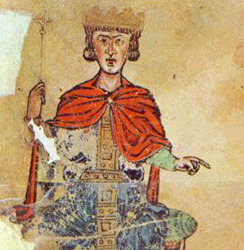
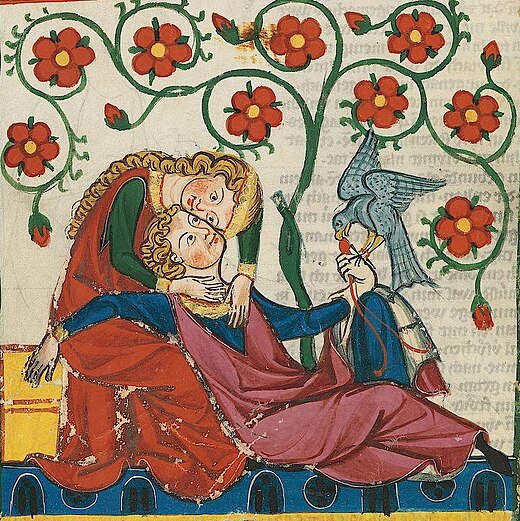






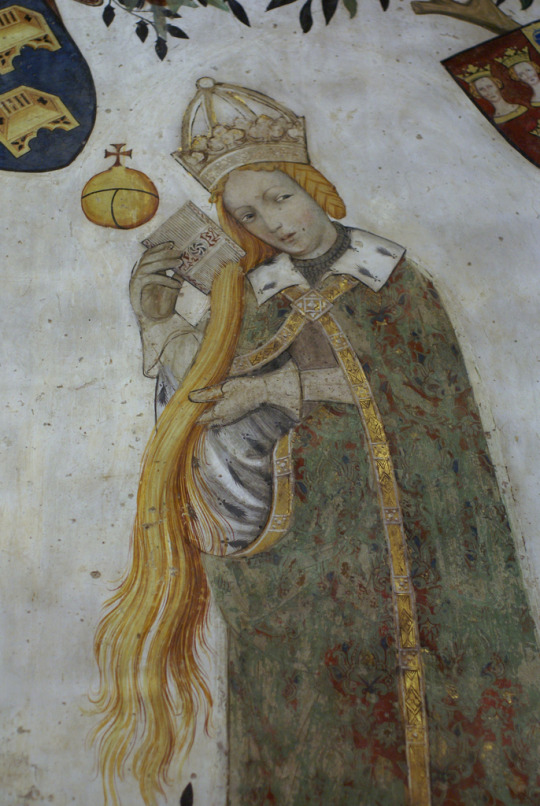
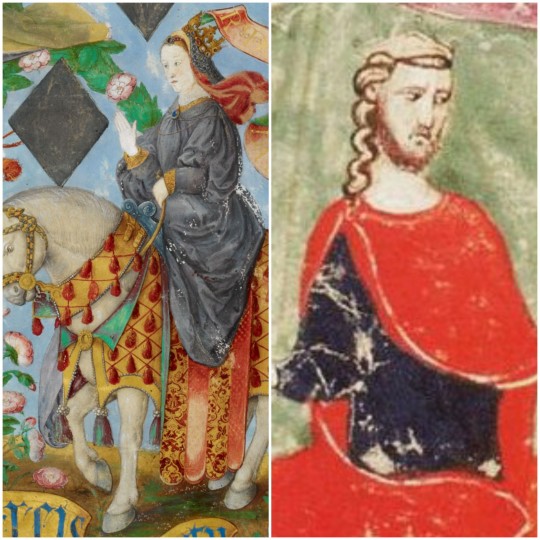
The Bastard Kings and their families
This is series of posts are complementary to this historical parallels post from the JON SNOW FORTNIGHT EVENT, and it's purpouse to discover the lives of medieval bastard kings, and the following posts are meant to collect portraits of those kings and their close relatives.
In many cases it's difficult to find contemporary art of their period, so some of the portrayals are subsequent.
1) Manfred I of Sicily (1232 – 26 February 1266), son of Holy Roman Emperor Frederick II and Bianca Lancia
2) His parents, Holy Roman Emperor Frederick II (1194 – 1250), son of Constance I of Sicily and Holy Roman Emperor Frederick I; with Bianca Lancia (c. 1210 – c. 1246/1248), daughter of Bonifazio d'Agliano
3) His brother, Conrad IV of Germany ( 1228 – 1254), son of Holy Roman Emperor Frederick II and his wife Isabella II of Jerusalem
4) His nephew, Conradin (25 March 1252 – 29 October 1268), son of Conrad IV and his wife Elisabeth of Bavaria
5) His brother, Henry VII of Germany (1211 – 1242), son of Holy Roman Emperor Frederick II and his wife Constance of Aragon
6) His brother, Enzo of Sardinia ( c. 1218 – 1272), son of Holy Roman Emperor Frederick II and Adelaide
7) His wife, Beatrice of Savoy (1223 – 1259), daughter of Amadeus IV of Savoy and his wife Marguerite of Burgundy
8) His daughter with his wife Helena Angelina Doukaina, Beatrix of Sicily (1260 –1307)
9) His daughter with his wife Beatrice of Savoy, Constance II of Sicily (c. 1249 – 1302); with her husband Peter III of Aragon (c. 1239 –1285), son of James I of Aragon and his wife Violant of Hungary
#jonsnowfortnightevent2023#asoiaf#a song of ice and fire#day 10#historical parallels#medieval bastard kings#echoes of the past#bastard kings and their families#manfred i of sicily#holy roman emperor frederick ii#bianca lancia#conrad i of sicily#conradin#conrad ii of sicily#margaret of sicily#henry ii of sicily#enzo of sardinia#beatrice of savoy#beatrix of sicily#constance ii of sicily#peter iii of aragon#canonjonsnow
15 notes
·
View notes
Link
Frederick II was King of Sicily from 1198, King of Germany from 1212, King of Italy and Holy Roman Emperor from 1220 and King of Jerusalem from 1225. He was the...
Link: Frederick II, Holy Roman Emperor
0 notes
Text
Human and Personification:
I've been thinking of Female Holy Rome again and with another person but not a Hetalia character or personification. Instead, it would be a historical figure or human, and I chose Emperor Frederick II or Stupor Mundi because what I read about him, whether the information was factual or a myth, fascinated me. I think she would also be fascinated by him. Also, she was not that old during his time, considering the age standards of personifications, so she still had much to experience before her death centuries later, one of the experiences would be having a brilliant and charming but still imperfect emperor who was Frederick, and during the imperial reign of his family, the Empire reached its height. (The family also got into conflicts with the Popes).
His birthday was also on December 26, just after the birthday I personally set for HRE. They'd be spending their birthdays next to one another or the same day(s).
I am currently imagining a scene about the two spending time together doing his favourite hobby, falconry, or rather, him doing it and her simply watching him being happy and carefree.
And it's very painful for beings like her to grow fond of someone, who was mortal and had a very very short life. So they would be left mourning over that mortal that unexpectedly left a mark in their hearts. I love interactions between humans and personifications. The appreciation between them. The appreciation of the personification of a human they represent, and the human appreciation of the personification who represents them. This connection is painfully heartwarming, knowing how different their lives were and how great the distance between their life spans (which depends on who is the personification). And yet despite their differences they ended up loving one another, be it in a romantic or platonic way.
#hetalia#hetalia world stars#hws holy roman empire#hws female holy roman empire#emperor frederick ii#human x nation#nation x human
1 note
·
View note
Text

Bust of Emperor Hadrian --- The Chalcedony head is Roman and dates to the the 2nd century with the beard being re-carved by a craftsman working for the court of Holy Roman Emperor Frederick II in the 13th century. The gilded and enameled silver torso and marble pedestal was crafted in Venice in the second half of the 16th century.
from The Al Thani Collection
439 notes
·
View notes
Photo

Third Crusade
The Third Crusade (1189-1192 CE) was launched to retake Jerusalem after its fall to the Muslim leader Saladin in 1187 CE. The Crusade was led by three European monarchs, hence its other name of 'the Kings' Crusade'. The three leaders were: Frederick I Barbarossa, King of Germany and Holy Roman Emperor (r. 1152-1190 CE), Philip II of France (r. 1180-1223 CE) and Richard I 'the Lionhearted' of England (r. 1189-1199 CE). Despite this pedigree, the campaign was a failure, the Holy City never even being attacked. Along the way, there were some victories, notably the capture of Acre and the battle of Arsuf. Fizzling out with a whimper, the Crusade collapsed because, by the time they arrived at their objective, the western leaders found themselves without sufficient men or resources to resist the still intact armies of Saladin. Although a compromise was negotiated with access for pilgrims to Jerusalem permitted and a Christian foothold maintained in the Middle East, another attempt to take the Holy City would shortly be made the original objective of the Fourth Crusade of 1202-1204 CE.
The Fall of Jerusalem
The Second Crusade (1147-1149 CE) had effectively ended with the complete failure to take Damascus in Syria in 1148 CE. The various Muslim states in the Middle East then realised that the once-feared western knights could be defeated and the precarious existence of the Crusader-held territories, the Latin East, was starkly highlighted. All that was needed now was a unification of Muslim forces and this was provided by one of the greatest of all medieval rulers, Saladin, the Sultan of Egypt and Syria (r. 1174-1193 CE).
Saladin, the founder of the Ayyubid dynasty in Egypt, took control of Damascus in 1174 CE and Aleppo in 1183 CE. Saladin then shocked the world by defeating the army of the Kingdom of Jerusalem and its Latin allies at the Battle of Hattin in 1187 CE. Thus, Saladin was able to take control of such cities as Acre, Tiberias, Caesarea, Nazareth, Jaffa and even, the holiest of holies itself, Jerusalem. Remarkably lenient with his Christian captives compared to the butchery of the First Crusade (1095-1102 CE), after the recapture of Jerusalem almost a century earlier, Saladin accepted ransoms from those Latin Christians who could afford to buy their freedom and enslaved the rest. Eastern Christians were permitted to remain in Jerusalem as a protected minority group. The Latin East had all but collapsed, only Tyre remained in Christian hands, under the command of Conrad of Montferrat, but it would prove a useful foothold for the coming fightback.
Pope Gregory VIII only reigned for a few months in 1187 CE but, in October of that year, he made a lasting impact on history by calling for yet another crusade to win back Jerusalem and such lost holy relics as the True Cross. Nothing less than a repeat of the remarkable feat of the First Crusade would do. No fewer than three monarchs took up the Pope's challenge: the Holy Roman Emperor, Frederick I Barbarossa, king of Germany, Philip II of France and Richard I of England. With these being the three most powerful men in western Europe, the campaign promised much.
Continue reading...
77 notes
·
View notes
Note
Hi! I found your blog just recently and I love the Vesnaposting - the art, the comics, the gifs from the game, all of it. I've got so many questions:
How did you got yourself interested in this time period? Why Bohemia? Where exactly could the castle be found? Do you plan to connect your story with some "greater events" from that time? Will your OCs travel a bit?
Please, continue with all of this. It looks great and I would also love to play the game one day!
Thank you very much for the questions! I love getting intricate and thought out things to answer, and I'm humbled you like it!
I've been a sort of amateur medievalist for a while now- I can't point specifically to when it started, but it might have been reading Pillars of the Earth as a teenager, or finding out that the town I grew up in had an important courthouse that was closed in the 1300s- that's a scale of time that overwhelmed me then, and still makes me feel a deal of frisson now. The 1200s specifically sit at an intersection of really cool stuff in central europe- it's right before Franziscanism spreads and shakes up the monastic system, Waldensian heretics were prefiguring how the church would later fracture (I feel they resemble specifically the czech utraquists in some of their stylings and beliefs), and the Pope was in open conflict with the holy roman emperor; On the political side, Friedrich II was nearing the end of his reign, and his death would lead to the interregnum, where the empire is effectively without an emperor for years on end; The Popponer dynasty is about to crumble in Austria, and the Lion of Prague Ottokar II Přemýsl is about to add all of Austria to the Bohemian Kingdom, interrupting the ongoing Ostsiedlung (German Eastern Colonization, for those who don't know), all to the backdrop of endless failing crusades. It's just before the Habsburgs gain greater relevance and europe slides into the rennaissance, in my mind putting an end to the "proper" middle ages.
I've been curious about Czechia for a long time; I was too young to really notice when the country joined the EU, but even years later, I remember grumbling that they were going to "ruin" us, by flooding our country with cheap labour or products or somesuch. It's always struck me as odd. That energy ended up getting redirected towards migrants from the near east in the 2010s, but it's stuck with me; Here's a country Austria has, in some form or another, struggled with for centuries, dominated terribly through to the very end of our wretched pitiful attempt at an 'empire,' tried to keep chunks of as recently as 100 years ago, and yet I didn't learn so much as a single thing about it in school. Austrian schooling is dead set on not mentioning a single thing between about 1500 to 1933 (and even then, we often gloss over just *how* enthusiastic a lot of austria was to participate in the holocaust and become part of germany- or how no real denazification took place after the war), and obviously reading any history at all immediately got me hooked on finding out more. History aside, I love the bohemian massif dearly; the rolling hills, deep shadowy forests, little brooks, misty autumns, distant alps, it's one of my favourite regions on earth; I grew up in southern upper austria, but studied near Freistadt, which is where I gathered a lot of reference material for Vesna.
The castle doesn't have an official location, but there is a general area: "north of Freistadt, east of Rožmberk." Here are some rough indications on a modern Vesna era map, a rennaissance map, and google maps:



4. Not to spoil anything, but yes- Franzesca's father, a Bavarian, is a true believer in the "stupor mundi" Frederick II, and the need to "germanize" the backward slavic populations of Bohemia; He detests Saint Václav and forbids castle servants from speaking czech. The timing of the events of Vesna is chosen very specifically to be ironic in this regard- but you'll see when we get there :P
5. Yes, at the very least you will get to see Vesna and friends in the Machlant, Rožmberk and Linz. Franzesca will travel to her family home of Innsbruck and to Normandy, and it's likely more will happen, depending on where the story goes.
Thank you again for the questions! I hope to be working on Vesna for a long time, if it stays interesting :)
51 notes
·
View notes
Text
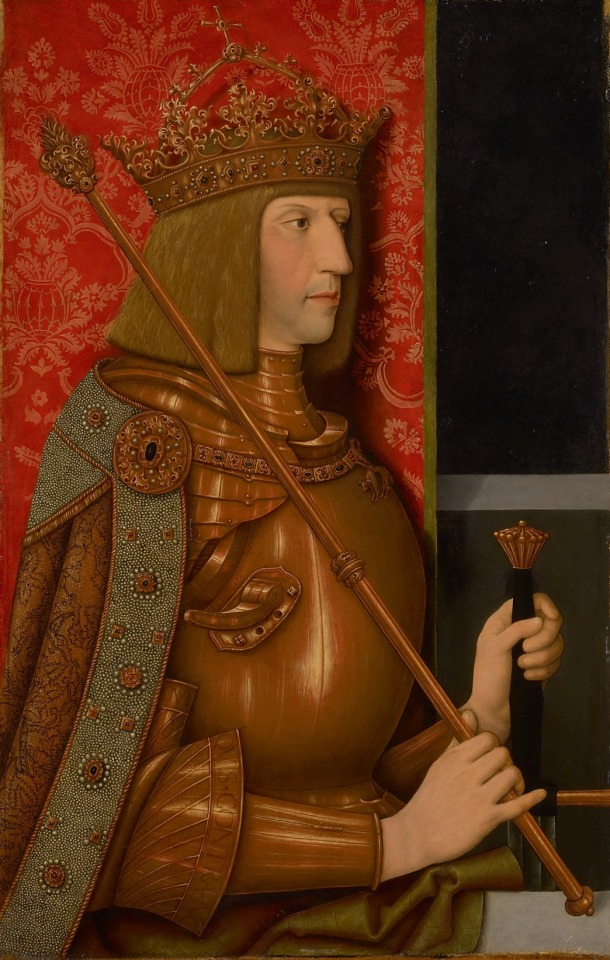
Maximilian I
Artist: Bernhard Strigel (German, 1460-1528)
Date: Before 1508
Medium: Oil on panel
Collection: Kunsthistorisches Museum Vienna, Austria
Maximilian I, Holy Roman Emperor
Maximilian I (22 March 1459 – 12 January 1519) was King of the Romans from 1486 and Holy Roman Emperor from 1508 until his death in 1519. He was never crowned by the Pope, as the journey to Rome was blocked by the Venetians. He proclaimed himself elected emperor in 1508 (Pope Julius II later recognized this) at Trent, thus breaking the long tradition of requiring a papal coronation for the adoption of the Imperial title. Maximilian was the only surviving son of Frederick III, Holy Roman Emperor, and Eleanor of Portugal. Since his coronation as King of the Romans in 1486, he ran a double government, or Doppelregierung (with a separate court), with his father until Frederick's death in 1493.
#portrait#maximilian i#holy roman emperor#painting#oil on panel#king of the romans#middle ages#history#16th century painting#european art#bernhard strigel#german painter#german art#artwork#oil painting
26 notes
·
View notes
Text
Reading this book and it just casually dropped that Emperor Frederick II of the Holy Roman Empire used to send the sultan of Damascus math problems. And apparently with the intention of getting an answer sent back because the sultan would have to bring in mathematicians to solve the problems
It gives no other information or context and I prefer it that way, just the sultan of Damascus going about his day only to get math homework from the Holy Roman Emperor
24 notes
·
View notes
Text
Chapter 58: Wukong chooses good over evil. By killing somebody.
Well, this chapter explained a lot. I’m finally up to speed with you all - the Six-Eared Macaque was Wukong’s alter ego. Now that I know, I’m seeing the last few chapters differently. So I want to circle back to this from last chapter:
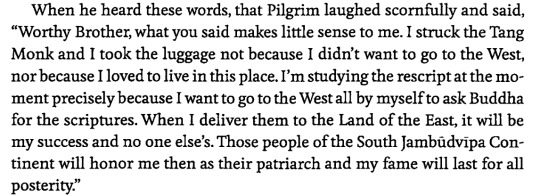
Look, we’ve all had bad experiences with team work. I’m sure we’ve all had times when we’ve wanted to spit the dummy and just do the whole thing ourselves. So we can take all the credit, which we totally deserve… maybe. But apparently that is not the solution.
It is interesting that the macaque is killed, not just subdued. Not only is it killed, the entire species is permanently eradicated:

That is, Wukong’s decision to commit to ‘good’ is permanent; even irreversible. That is a deep level of commitment. It’s very different from the idea of having to fight temptation constantly - having to re-commit to choosing good every day, many times each day.
In other words, I was thinking this:

Whereas Wukong was thinking this:

I guess he’s got a point. If you’re ever going to reach true enlightenment, I guess you’ve got to quit your earthly bullshit once and for all.
So I guess it’s kind of like this:

And then you’re Gryffindor forever, no further effort required to stay away from the dark side. HOORAY! Except I think Wukong would be more like:

Interestingly, Tathagata’s description of the Six-Eared Macaque doesn’t make him sound inherently evil:

The footnote is cool:

Brave’s AI had a wildly different take on that saying:
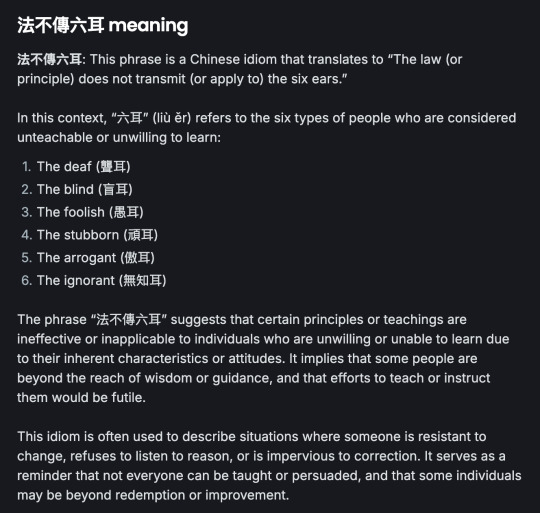
I mean, Yu would know better than random AI, obviously. But the AI answer did make me curious. Alas, the search results seemed to have nothing to do with it.
Anyway, Wukong’s lack of sentimentality in killing the macaque is interesting. So is his reproach to Tathagata when Tathagata seems horrified:

Perhaps Wukong is right: perhaps bad traits within oneself should be squelched unflinchingly, without a backward glance. Perhaps compassion is an inappropriate reaction there, just as Tripitaka’s ��compassion” is misplaced a lot of the time.
Still, I’m surprised that nobody punishes him or says he’s out of line for telling Tathagata of all beings what to do. Seems pretty cheeky.
The conflict between Wukong and Tripitaka is resolved by Tathagata and Guanyin telling Wukong and Tripitaka to pull their heads in. Tripitaka obeys without hesitation. I kind of love this about him.

Tripitaka and Wukong really are opposites in this way. Wukong is all backtalk, defiance and autonomy. Tripitaka is obedience and reverent submission personified.
Anyway, this results in everyone being best buds again:

Because no one needs to actually talk through their differences or resolve their feelings about, you know, whether it’s okay to murder people or not. They just need to be told by their superiors to get over it.

And now, in no particular order, honourable mentions from this week:
I loved the bureaucratic hand-writing at the Mountain of Perpetual Shade. “I’m not sure how to deal with this. Let me call my manager. Let me call ALL the managers!”

That moment where you want to be nice to your guests, cos they seem really fancy. But you also want them to leave before they smash up the furniture:

Flower showers!


These were referenced in in chapter 52, too:


I wish I knew what Yu was talking about. Even my best googling returns nothing. But it sure does sound pretty!
Last up, it just sank in that Guanyin has a cockatoo:

TIL cockatoos are not just Australian. And that Indonesian white cockatoos look much more regal than their Australian sulphur-crested cousins.

Apparently:
They were quite popular in China during the Tang dynasty, a fact which in turn influenced the depictions of Guan Yin with a white parrot. The Fourth Crusade was also sealed between Holy Roman Emperor Frederick II and the Sultan of Babylon in 1229 with a gift of a white cockatoo.

Speaking of all things nature, did anyone notice that the macaque turned into a bee when it tried to escape? Alas, the macaque’s bee clearly wasn’t as impressive as Wukong’s bee transformation at the Scorpion Demon’s lair, because the macaque’s bee doesn’t get any poetry. Let’s honour it with this picture instead.

RIP, Evil Wukong!
@journeythroughjourneytothewest
---
Image credits: The usual spiel. The images above are either AI, or random pictures from the web, or a Frankenstein of both; some modified, some not. They are not original. The pre-existing images should turn up with reverse googling or have links embedded, but feel free to ask and I’ll dig up sources.
#journey to the west#jttw#jtjttw submission#jttw reading group#jttw book club#tang sanzang#tripitaka#guanyin#sun wukong
16 notes
·
View notes
Text
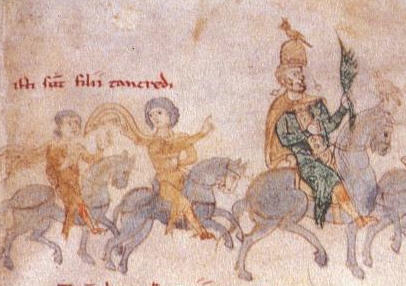

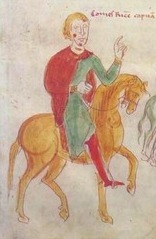

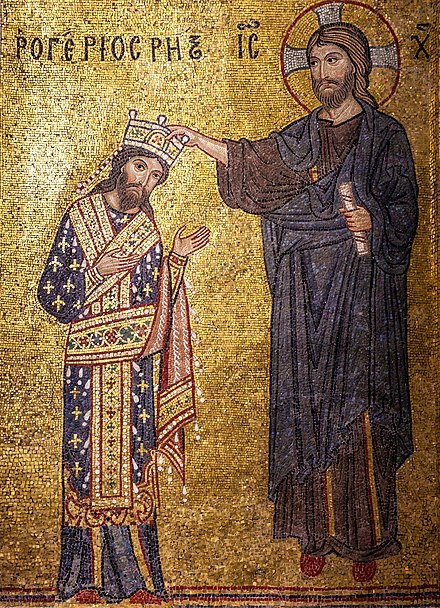
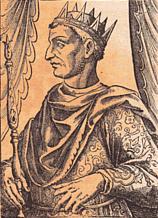
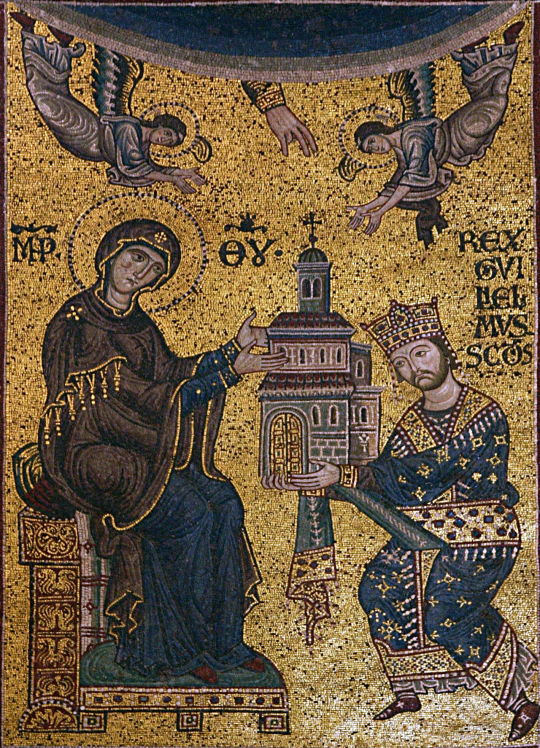


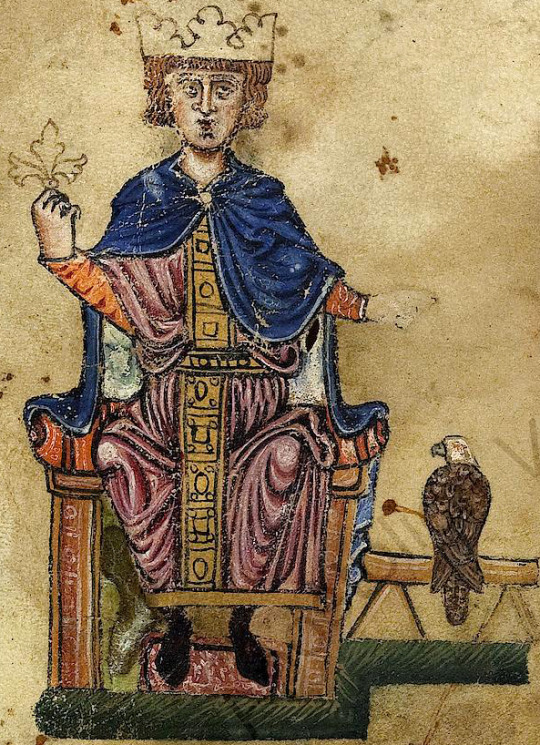
The Bastard Kings and their families
This is series of posts are complementary to this historical parallels post from the JON SNOW FORTNIGHT EVENT, and it's purpouse to discover the lives of medieval bastard kings, and the following posts are meant to collect portraits of those kings and their close relatives.
In many cases it's difficult to find contemporary art of their period, so some of the portrayals are subsequent.
1) Tancred I of Sicily ( 1138 – 1194), son of Roger III of Apulia and Emma of Lecce; with his sons Roger III of Sicily (1175 –1193) and William III of Sicily (c. 1186 – c. 1198)
2) His wife, Sibylla of Acerra (1153–1205), mother of Roger III and William III
3) His brother-in-law, Richard of Acerra (d. 1196)
4)His father, Roger III of Apulia (1118 – 1148), son of Roger II of Sicily and his wife Elvira of Castile
5) His grandfather, Roger II of Sicily (1095– 1154), son of Roger I of Sicily and his wife Adelaide del Vasto
6) His uncle, William I of Sicily (1120/1121 – 1166), son of Roger II of Sicily and his wife Elvira of Castile
7) His cousin, William II of Sicily (1153 – 1189), son of William I of Sicily and his wife Joan of England
8) His aunt, Constance I of Sicily (1154–1198), daughter of Roger II of Sicily and his wife Beatrice of Rethel
9) His uncle, Holy Roman Emperor Henry VI (1165 – 1197), son of Holy Roman Emperor Frederick I and his wife Beatrice I of Burgundy; and Constance I of Sicily's husband
10) His cousin, Holy Roman Emperor Frederick II (1194 – 1250), son of Constance I of Sicily and Holy Roman Emperor Frederick I
#jonsnowfortnightevent2023#asoiaf#a song of ice and fire#day 10#echoes of the past#historical parallels#medieval bastard kings#bastard kings and their families#tancred i of sicily#roger iii of sicily#william iii of sicily#sibylla of acerra#richard of acerra#roger iii of apulia#roger ii of sicily#william i of sicily#william ii of sicily#constance i of sicily#holy roman emperor henry vi#holy roman emperor frederick ii#canonjonsnow
7 notes
·
View notes
Text
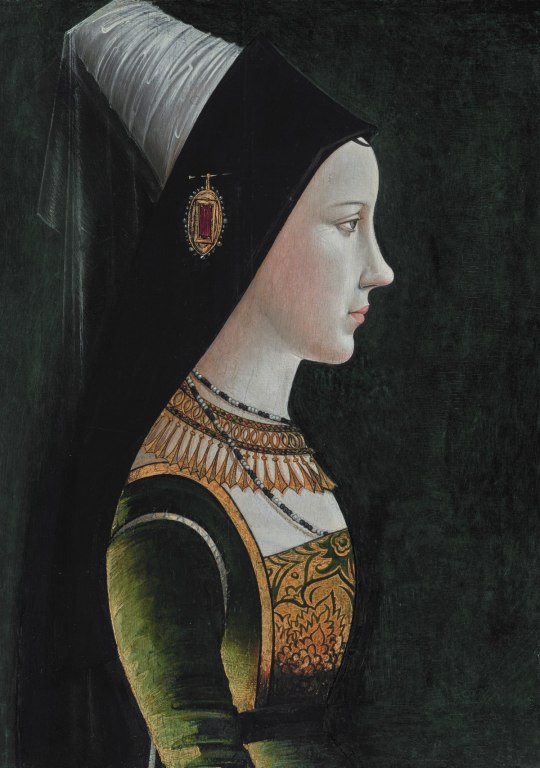


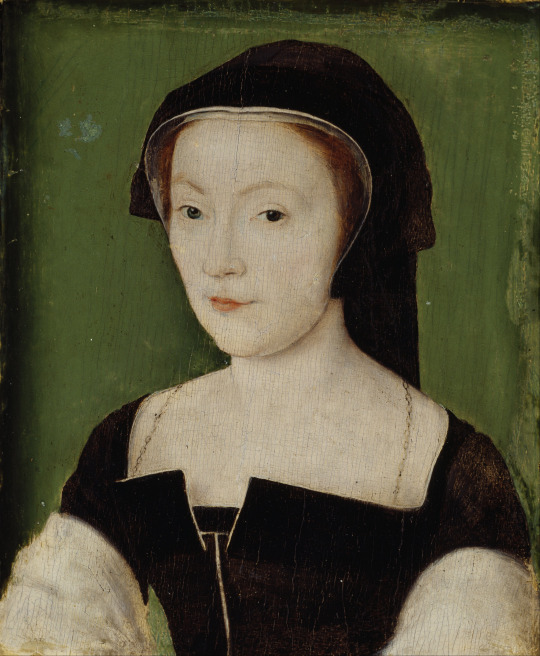
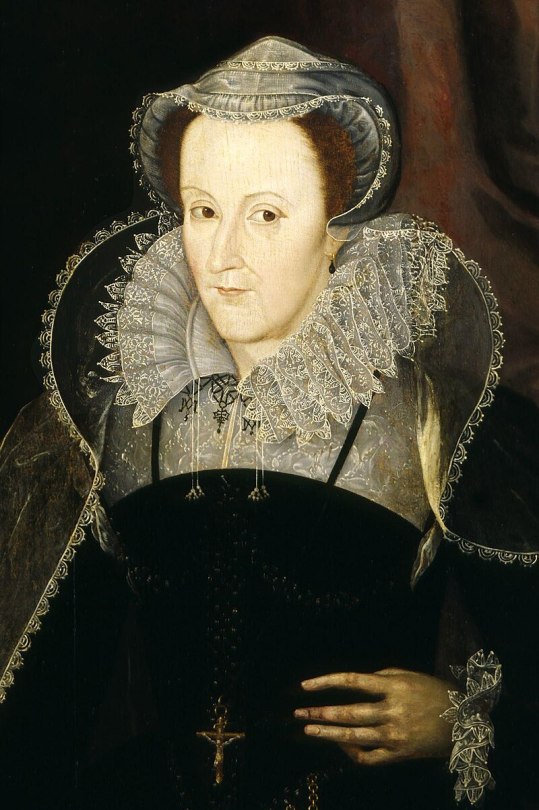
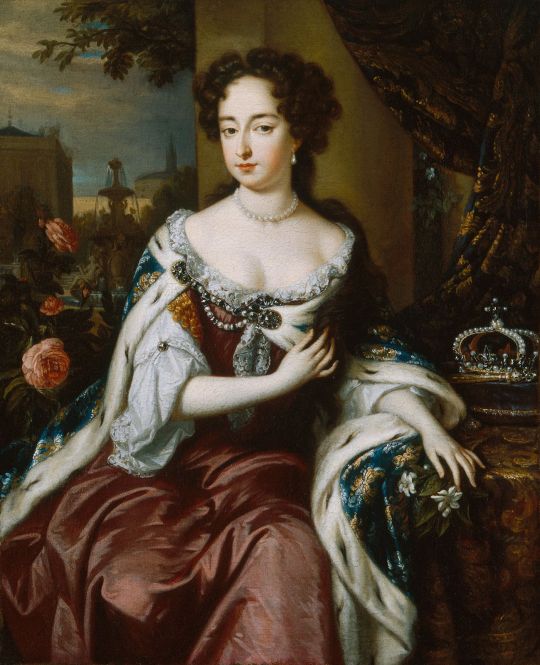
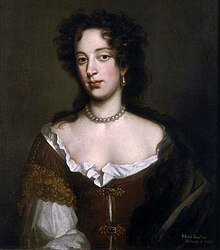

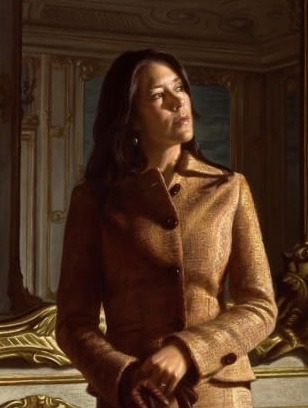
9 Royal Mary’s of history - Reigning and Consorting: -> 1. Mary of Burgundy: Consort of Maximilian I, Holy Roman Emperor (1457–1482). -> 2. Mary of Hungary (Mary of Habsburg): Queen consort of Louis II of Hungary and Bohemia (1505–1558). -> 3. Mary I of England: Reigned 1553–1558 (1516–1558). -> 4. Mary of Guise: Queen consort of James V of Scotland, regent for Mary, Queen of Scots (1515–1560). -> 5. Mary, Queen of Scots: Reigned 1542–1567 (1542–1587). -> 6. Mary II of England: Reigned 1689–1694 (1662–1694). -> 7. Mary of Modena: Queen consort of James II of England, regent for James Francis Edward Stuart (1658–1718). -> 8. Mary of Teck (Queen Mary): Consort of George V of UK, reigned 1910–1936 (1867–1953). -> 9. Mary Elizabeth Donaldson (Queen Mary): current Queen consort of Frederick X of Denmark since 14th January 2024 (1972-).
#ktd#Royal history#european history#Mary I#mary ii#mary queen of scots#queen mary#Mary of teck#Mary of Modena#Mary of guise#Mary of burgundy#Mary of Hungary#European royalty#royal#royalty#brf#british royal family#british royalty#british royal fandom#Art#art history#Denmark
74 notes
·
View notes
Text
Someone should truly speak bout the “later wife effect” that seems to have haunted historical figures since times long forgotten.
To break it down to you, what I call the “later wife effect” occurs when a male historical figure suddenly looses his beloved wife (most of the times, his first one) in an untimely and tragic manner -either by a childbirth gone wrong, an accident or a sudden illness-, turning the once mirthful husband into a grief-stricken widower. Perhaps because he lacks succession from said wife, because he has to provide spares to his heir, or even because an alliance is needed, he is forced to marry again; but the love never arises fully, their marriage turns into a bound of duty, and no matter what she does, or how loved she is outside their marriage: the later wife will forever be under the shadow of the first, a perfect idol, immortalised by her early death.
The “later wife effect” knows various levels:
In 1673, Leopold I, Holy Roman Emperor, lost his beloved Margaret Theresa when she was yet to turn twenty two and with child. Their seven years of union had produced four children, but only a daughter lived when Margaret Theresa died, and he went on to marry twice again; and even though he would sorrowfully remark that neither Claudia Felicitas of Austria or Eleonore Magdalene of Neuburg, his following brides, were “not like my only Margaretha”, his marriages were remarkably happy and so was he. This could be one of the mildest examples.
The middle ground would be when the marriage with the later wife is dutiful and polite, but loveless. Frederick William II of Hesse married Alexandra Nikolaevna, but soon lost her due to complications of childbirth. He would remarry nine years later to the beautiful and lively Anna of Prussia, and even though they eventually had six children, their marriage was notably cold and unhappy. Leopold I of Belgium widowed of his wife, Charlotte of Wales, soon after she gave birth to a dead son; fifteen years later, know king of Belgium, he took Louise-Marie of Orléans hand in marriage; she was shy, delicate, witty and partook in many charitable causes, earning the love of the Belgians, and the respect of her husband, with whom she had a fruitful and tranquil union; but Leopold would not be faithful to her, committing adultery with a much younger Arcadie Claret, who was said to resemble the long gone princess Charlotte. She perished a year after he had a son with Claret, and her dead did not stop the relationship between the two of them.
More unhappy cases of this effect would be those of Maximilian I, Holy Roman Emperor, and his descendant, Joseph II. When still an archduke, Maximilian married Mary of Burgundy and loved her much, a love so legendary it lived through generations in the art commissioned by their descendants. But the fairytale would come to an abrupt end when, after five years of marriage, Mary would find her untimely dead while pregnant with their fourth child, after her horse threw her off the saddle. Maximilian was most heartbroken and, after a failed marriage attempt with the young duchess Anne of Brittany, he would wed Bianca Maria Sforza. The empress from Milan was deemed “more beautiful than Mary” by Maximilian, but neither her beauty not her many charms of her would soften his callous attitude towards his wife. Having endured a miscarriage during the first months of their union, Bianca Maria, the once most sought after princess in Europe, had become a ghost in her own court, severely neglected by her husband, who refused to attend to her own funeral nor dedicate a gravestone for her. Similarly, after the traumatic passing of his wife, Isabella of Parma, Joseph II was forced to remarry to Maria Josepha of Bavaria, who he did not found as attractive as the late archduchess. He grew so disgusted of her that the same devoted husband that has been by Isabella’s bedside now commanded to put a wall between his balcony and hers, so that he could not see her, distressing old servants in the palace so much with his cold attitude that some left. When, after two years of marriage, her life was robbed by smallpox -the same ailment that had taken Isabella’s life four years before-, Joseph declared she had been worthy of respect and that he repented his coldness. However, he refused to visit her bedside and did not appear during her burial.
This should not be confused with what I call “the younger wife effect”, which takes place when a widowed historical figure, who had long remained unwed by choice, suddenly takes marriage to a beautiful and much younger person that is described to bring happiness to his once lonely and dull life. This would perfectly be exemplified with prince Maximilian of Saxony’s marriage with princess Maria Luisa Carlota of Parma, almost twenty one years since the passing of his wife (princess Carolina of Parma) or Edward I’s marriage to Marguerite of France.
15 notes
·
View notes
Text
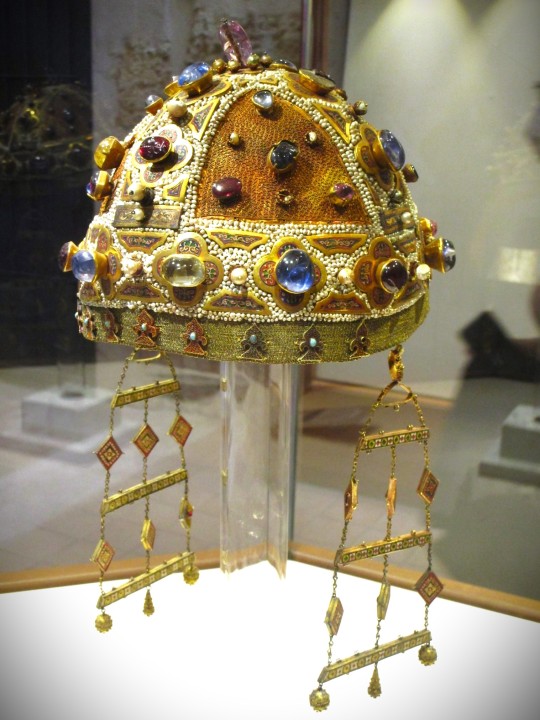
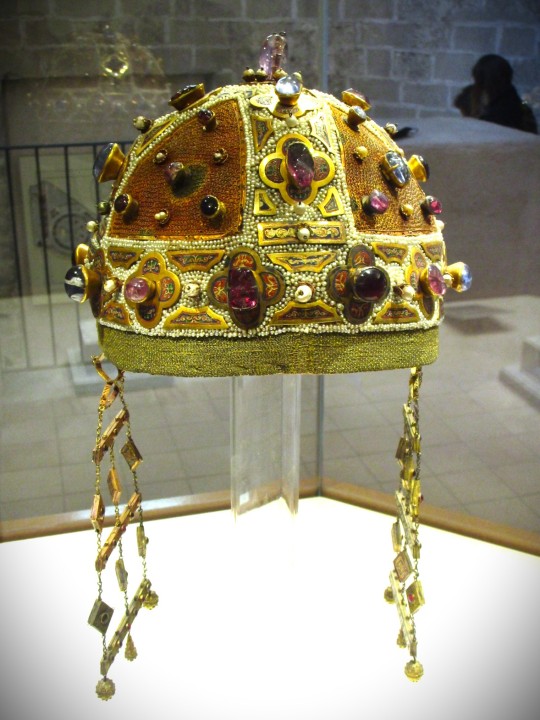
Constance of Aragon's Crown - c. 1220-1222, gold and gilded silver filigree, glazes, pearls, and polychrome stones - in the Treasury of the Cathedral of Palermo, Sicily - Photos by Charles Reeza
As the result of arranged marriages negotiated by her brother, Constance became the Queen of Hungary at the age of 19, the Queen of Sicily at the age of 30 when she married King Frederick II (who was only 14 years old), Queen of Germany when she was 36 and Frederick was crowned King of Germany, and at the age of 41, when her husband became the Holy Roman Emperor, she was crowned Holy Roman Empress with this crown. She died of malaria at the age of 43 and was entombed in the Palermo Cathedral, in a Roman sarcophagus, wearing her crown.
173 notes
·
View notes
Text
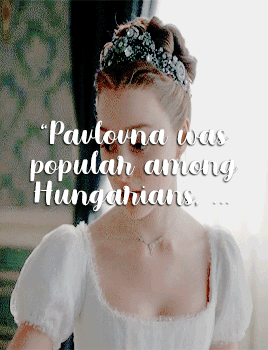
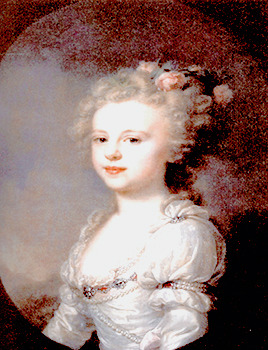
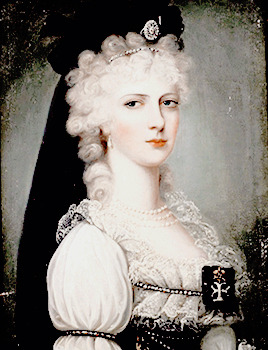

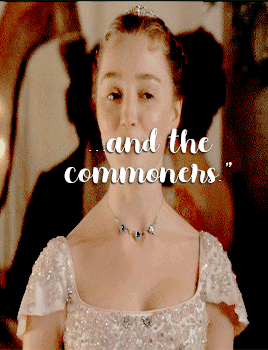
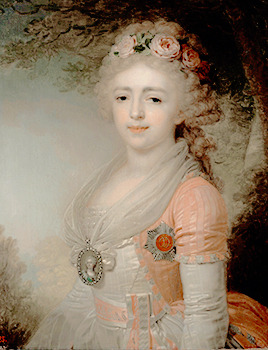
"In 1799, three years after her failed betrothal with the King of Sweden, another marital project originated for Alexandra. Previously in 1798, Dukes Ferdinand Augustus and Alexander Frederick of Württemberg who were the brothers of the Empress Maria Feodorovna, arrived in St. Petersburg to serve in the Russian army. They expressed the interest of Austria to join with Russia in a coalition against the rising power of the French Republic and Napoleon, and to cement this alliance, it was decided to arrange a marriage between Alexandra and Archduke Joseph of Austria, Palatine (Governor) of Hungary and a younger brother of Francis II, Holy Roman Emperor. Archduke Joseph personally came to Russia to see his bride. The meeting between them was successful. In mid-February 1799 the betrothal ball was held. Later, a marriage contract was signed in which Alexandra would be allowed to kept her Russian Orthodox faith. In October, Count Fyodor Rostopchin wrote:
"Believe me, that's not good started to strengthen the alliance with the Austrian court by ties of blood... Of all the sisters she will be given the least successful marriage. She will have nothing to wait for, and her children even more so."
On 25 September 1799, a decree was published about the royal title of Alexandra. In Russia, she was referred to as "Her Imperial Highness Grand Duchess the Archduchess of Austria" with the French prefix of "Palatine d'Hongrie". The wedding took place on 30 October 1799 at Gatchina Palace, one week after the wedding of her sister Elena. To celebrate both events, poet Gavrila Derzhavin wrote the ode "the wedding celebrations of 1799". On 21 November the couple went to Austria. Countess Varvara Golovina remembered that Alexandra was sad to leave Russia, and her father Emperor Paul I "constantly repeated, would not see her since her sacrifice." According to Alexandra's confessor, Andrei Samborski, Alexandra was given a cold reception in Vienna. However, other sources offer a different view. Queen Maria Carolina of Naples (the Emperor's mother-in-law) and her daughters arrived in Vienna in August 1800 for a long stay. Maria Carolina's daughter, Princess Maria Amalia of Naples, wrote in her journal that on 15 August the Queen and her daughters were introduced to Alexandra, whom she described as "very beautiful". Maria Amalia and Alexandra became friends during this time; and the Princess of Naples wrote in her journal that the Russian Grand Duchess and her husband had a friendly relationship with the rest of the imperial family and took part in the family gatherings, parties and balls in Vienna, which contrasts with the version given by Andrei Samborski. For instance, in January 1801, Maria Amalia wrote in her journal that the imperial family used to attend balls in Archduke Joseph's residence in Vienna, where "beautiful Alexandra, always serious and sad, has a magnificent household." When she was presented to Emperor Francis II, she reminded him of his first wife Elisabeth of Württemberg, who was her maternal aunt; this caused the jealousy of Empress Maria Theresa, Francis II's second wife, who also was envious of Alexandra's beauty and fine jewelry. Imperial confessor Andrew Samborski wrote:
"Remembering the happy cohabitation with her led him (the Emperor) in extreme confusion of mind which afflicted the heart of the Empress, his present wife. After this, she became in the innocent victim of the Empress' implacable vengeance...The Empress not forgotten and humiliated her parents and siblings when she called them a family of freaks, due to the treatment that Grand Duke Constantine gave to his wife."
Once, Alexandra turned up to a ball beautifully dressed, with magnificent jewellery. The Empress was incensed at being upstaged by the Archduchess, and ordered her to remove her jewellery, and also told her that she could no longer wear them. Heeding her instructions, Alexandra only decorated her hair with flowers when she attended a play some time later. The flowers highlighted her beauty, leading her to be applauded and being given a standing ovation, making Maria Theresa even more furious. Archduke Joseph could not protect his wife from these attacks. Furthermore, her Eastern Orthodox faith aroused the hostility of the Roman Catholic Austrian court, who urged her to convert. Pavlovna was popular among Hungarians, both the nobles and the commoners. According to the legend, it was her suggestion to add the color green as the third color to the flag of Hungary. Hungarians had been using red and silver, then red and green as their national colors for centuries at the time. However, in the late 18th century, a third color was proposed to be added to the flag, to follow the style of the French tricolor. Pavlovna suggested green as a symbol for hope. By the mid-19th century, the red-white-green Hungarian tricolor became widespread.
Wikipedia of Grand Duchess Alexandra Pavlovna.
87 notes
·
View notes
Text
He who defends everything, defends nothing.
Frederick II, Holy Roman Emperor
238 notes
·
View notes
Text
there is a painting that has gone ENTIRELY out of my head but it's of a king or holy roman emperor or someone meeting his wife for the first time and she's arriving by boat and it's in either a like. baroque or maaaaaaybe even pre-raphaelite and i thought it was of frederick ii meeting one of his wives but i can NOT find it and it's driving me insane.
41 notes
·
View notes